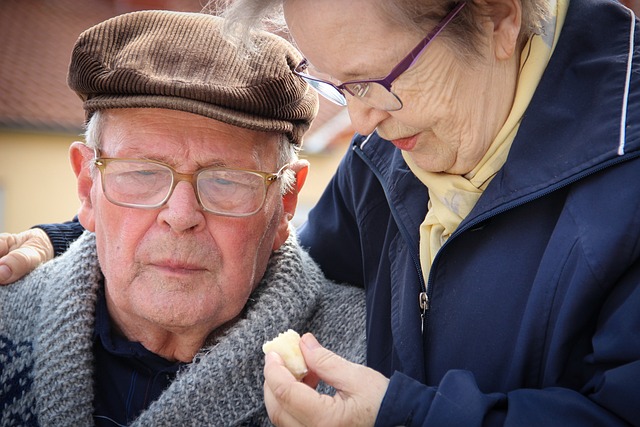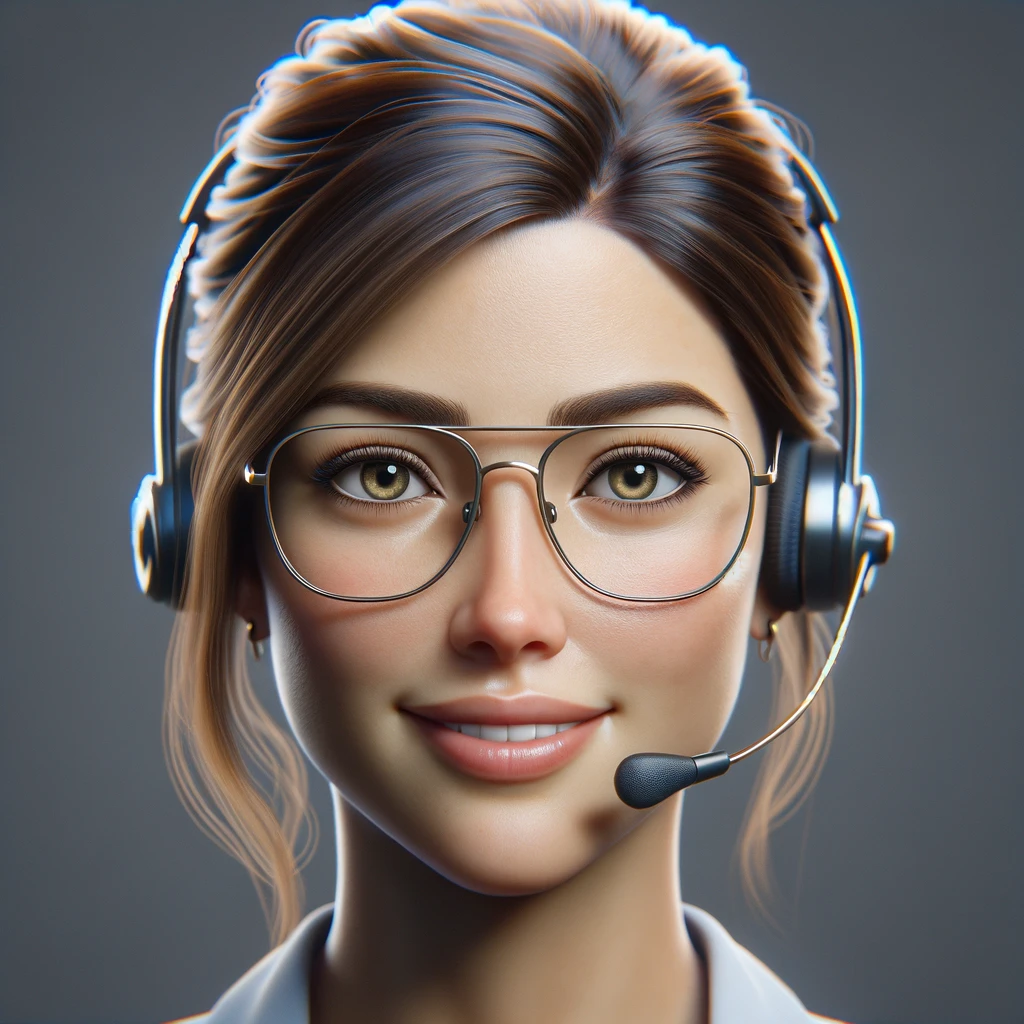Imagine a world where elderly care is no longer defined by limitations, but instead by boundless possibilities. Thanks to the continuous advancements in cutting-edge medical technology, this dream is becoming a reality. From wearable devices that monitor vital signs to robotic companions that provide companionship and assistance, the landscape of elderly care is undergoing a transformative revolution. In this article, we will explore the ways in which these innovative technologies are changing the game, improving the quality of life for our beloved seniors and ensuring that they live their golden years to the fullest. Prepare to be amazed by the remarkable ways in which revolutionary medical technology is reshaping elderly care.
1. Introduction to Revolutionizing Elderly Care
1.1 The importance of elderly care
Elderly care plays a crucial role in ensuring the well-being and quality of life for older individuals. As the global population continues to age, the demand for effective and efficient care solutions has become increasingly vital. The need for elderly care arises from the unique challenges faced by older adults, such as chronic illnesses, limited mobility, and cognitive decline. Providing comprehensive and compassionate care to seniors is not only a moral obligation but also a societal responsibility.
1.2 Current challenges in elderly care
Currently, there are several challenges that need to be addressed in elderly care. These include limited access to healthcare services, social isolation, caregiver burden, and inadequate support for aging in place. The traditional healthcare system often falls short in meeting the specialized needs of elderly individuals. Furthermore, the scarcity of resources and healthcare professionals exacerbate the challenges faced in delivering quality care to the elderly population.
1.3 The role of medical technology in revolutionizing care
In recent years, medical technology has emerged as a powerful tool in revolutionizing elderly care. By harnessing technological advancements, healthcare providers and caregivers can address the challenges faced in providing comprehensive care to older adults. From wearable devices to robotics, telemedicine to artificial intelligence, innovative medical technologies are transforming the way elderly care is delivered. These advancements are not only improving the quality of care but also empowering older individuals to lead healthier, more independent lives.
2. Wearable Devices for Monitoring Health
2.1 Introduction to wearable devices
Wearable devices, such as smartwatches and fitness trackers, have gained popularity in recent years. These devices are equipped with sensors and technology that enable the monitoring of various health parameters in real-time. When it comes to elderly care, wearable devices have immense potential in improving health monitoring and early detection of health issues.
2.2 Monitoring vital signs in real-time
One of the primary benefits of wearable devices in elderly care is the ability to monitor vital signs in real-time.

2.3 Detecting falls and emergencies
Falls are a significant concern for the elderly population, often leading to serious injuries and hospitalizations. Wearable devices with fall detection capabilities can automatically detect and alert caregivers or emergency services in the event of a fall. This feature provides reassurance to older individuals and their families, as help can be dispatched quickly, potentially reducing the severity of injuries and improving overall outcomes.
2.4 Enhancing medication management
Medication management can be challenging for older adults, especially those with multiple chronic conditions. Wearable devices can remind individuals to take their medications at the right time and ensure adherence to prescribed treatment plans. Furthermore, these devices can track medication intake, providing valuable data to healthcare professionals to monitor the effectiveness of medications and make informed adjustments if necessary.
3. Robotics and Automation in Assistance
3.1 Robotic companions for social interaction
Loneliness and social isolation are prevalent among the elderly population, contributing to various adverse health outcomes. Robotics has emerged as a promising solution to address this issue. Robotic companions, such as socially assistive robots, can engage in conversation, provide emotional support, and even assist with cognitive exercises. These robots can help combat feelings of loneliness and promote social interaction, ultimately improving the mental well-being of older adults.
3.2 Automating daily tasks and chores
Performing daily tasks and chores can become increasingly challenging for older individuals, especially those with limited mobility or cognitive impairments. Robotics and automation can help alleviate the burden by automating repetitive tasks such as cleaning, cooking, and gardening. By reducing the physical demands of daily living, robotics enables older adults to maintain their independence and enhances their overall quality of life.
3.3 Assisting with mobility and rehabilitation
Mobility issues can significantly impact the independence and mobility of older adults. Robotic devices, such as exoskeletons and mobility aids, can provide assistance and support for individuals with mobility impairments. These devices can help older adults regain their independence, improve their mobility, and engage in activities they previously enjoyed. Additionally, robotic devices can facilitate rehabilitation processes, assisting in physical therapy exercises and promoting faster recovery.
3.4 Remote telepresence for healthcare providers
Access to healthcare services can be challenging for older individuals residing in remote areas or those with limited mobility. Telepresence robots allow healthcare providers to remotely interact with patients, conduct examinations, and provide medical advice without the need for physical presence. This technology ensures that elderly individuals can access timely medical consultations and follow-up care, regardless of their geographical location or mobility limitations.
4. Telemedicine and Virtual Care
4.1 Access to remote medical consultations
Telemedicine has revolutionized the way healthcare is delivered by providing remote access to medical consultations. For older adults, this means that they can seek medical advice, receive prescriptions, and have regular check-ups without the need for in-person visits. Telemedicine eliminates barriers to healthcare access, especially for older adults living in rural areas or those with limited mobility. This technology ensures that elderly individuals can receive timely medical attention and expert advice, promoting better health outcomes.
4.2 Remote monitoring and disease management
Chronic diseases often require ongoing monitoring and management. Telemedicine allows healthcare providers to remotely monitor vital signs and disease progression, enabling timely intervention and adjustment of treatment plans. Through the use of connected devices and secure platforms, older adults can share relevant health data with their healthcare team, allowing for personalized care management and reducing the need for frequent hospital visits.
4.3 Improving access to specialized care
Access to specialized care can be limited, especially for older individuals requiring specialized treatments or consultations. Telemedicine bridges this gap by connecting older adults with specialists, regardless of geographical location. Expert opinions and specialized care plans can be obtained through virtual consultations, enabling older adults to receive the care they need without the hassle of long-distance travel or waiting times.
4.4 Reducing hospital readmissions
Hospital readmissions are a significant concern for the elderly population, as they can lead to further complications and increased healthcare costs. Telemedicine plays a crucial role in reducing hospital readmissions by facilitating remote monitoring, providing timely interventions, and ensuring continuity of care after discharge. By closely monitoring older adults’ health status and promptly addressing any concerns or changes, telemedicine helps prevent unnecessary rehospitalizations and enhances overall patient outcomes.
5. Electronic Health Records and Data Analytics
5.1 Digitizing and centralizing health records
The digital transformation of healthcare has brought about significant improvements in the management and accessibility of health records. Electronic health records (EHRs) allow healthcare providers to access and share patient information in real-time, eliminating the need for physical paper records. For elderly individuals, this means that their medical history, test results, and treatment plans can be accessed by healthcare professionals, facilitating better coordination and informed decision-making.
5.2 Real-time data collection and analysis
The integration of medical devices and wearable technology enables real-time data collection and analysis. This wealth of data provides valuable insights into the health status, habits, and trends of older adults. By leveraging advanced analytics and machine learning algorithms, healthcare providers can identify patterns, anticipate health issues, and personalize care plans based on individual needs. Real-time data analysis promotes preventive care, early detection of diseases, and timely interventions, ultimately improving the health outcomes of older adults.
5.3 Predictive analytics for personalized care
Predictive analytics can assist healthcare providers in identifying the risk factors and predicting future health events in elderly individuals. By analyzing large volumes of data, including medical history, lifestyle factors, and genetic information, predictive models can help identify individuals who are at a higher risk of developing certain health conditions. This information allows healthcare professionals to intervene early, implement preventive measures, and provide personalized care plans tailored to the individual needs of older adults.
5.4 Enhancing communication and coordination
Effective communication and coordination among healthcare providers, caregivers, and older adults are essential for delivering comprehensive and coordinated care. Electronic health records and data analytics facilitate seamless communication and collaboration by providing a centralized platform for sharing information, test results, and treatment plans. Improved communication enhances the continuity of care, reduces medical errors, and ensures that all stakeholders are aligned in delivering the best care possible for elderly individuals.
6. Assistive Technologies for Independent Living
6.1 Smart home automation systems
Smart home automation systems integrate various technologies to create an environment that caters to the unique needs of older adults. These systems can automate lighting, temperature control, and security features, making the home more comfortable and accessible for elderly individuals. By providing voice-controlled interfaces and remote access, smart home automation systems empower older adults to independently manage their living spaces, enhancing their sense of autonomy and well-being.
6.2 Voice-controlled devices and personal assistants
Voice-controlled devices and personal assistants, such as smart speakers, offer older adults a convenient and intuitive way to interact with technology. These devices can perform tasks such as setting reminders, playing music, or answering questions, all through voice commands. Voice-controlled devices enable older individuals to access information, entertainment, and assistance without the need for complex user interfaces or physical interaction, ultimately improving their overall quality of life.
6.3 GPS and wearable devices for safety
Safety is a paramount concern for elderly individuals, particularly for those with dementia or cognitive impairments. GPS tracking devices and wearable technology provide peace of mind to caregivers and family members by enabling real-time location tracking and emergency alerts.

6.4 Dementia-friendly technologies
The prevalence of dementia among the elderly population necessitates the development of dementia-friendly technologies. These technologies include memory aids, reminders, and digital assistive tools specifically designed to support individuals with cognitive impairments.

7. Innovative Rehabilitation Therapies
7.1 Virtual reality for cognitive and physical therapy
Virtual reality (VR) has proven to be a valuable tool in rehabilitation therapies for older adults. VR experiences can simulate real-world scenarios, allowing individuals to practice cognitive and physical exercises in a safe and controlled environment. VR-based therapies promote neuroplasticity, enhance cognitive function, and aid in physical rehabilitation, enabling older adults to regain lost skills, improve balance, and enhance overall well-being.
7.2 Exoskeletons for mobility and rehabilitation
Exoskeletons are wearable robotic devices that provide support and assistance to the wearer’s body. These devices can assist individuals with mobility impairments in walking, standing, and performing daily activities. Exoskeletons enable older adults to regain independence, improve mobility, and participate in daily life activities. Additionally, exoskeletons can be used in rehabilitation therapies to facilitate motor function recovery and improve strength and range of motion.
7.3 Brain-computer interfaces for communication
For individuals with severe physical disabilities, such as those resulting from strokes or neurodegenerative diseases, brain-computer interfaces (BCIs) offer a communication lifeline. BCIs translate brain signals into commands that can control external devices, allowing individuals to communicate and interact with their environment. BCIs empower older adults with limited mobility to express their needs, participate in conversations, and engage in social interactions, thereby reducing feelings of isolation and promoting a sense of independence and autonomy.
7.4 Neurostimulation techniques for pain management
Chronic pain is a significant concern for many older adults, often affecting their quality of life and overall well-being. Neurostimulation techniques, such as transcutaneous electrical nerve stimulation (TENS) and spinal cord stimulation (SCS), offer non-invasive and drug-free approaches to pain management. These techniques involve the application of electrical currents to specific areas of the body, effectively reducing pain and improving overall comfort for older adults.
8. Artificial Intelligence in Elderly Care
8.1 AI-powered chatbots for personalized assistance
AI-powered chatbots are virtual assistants that use natural language processing and machine learning algorithms to provide personalized support and assistance. In elderly care, chatbots can answer questions, provide medication reminders, and offer emotional support, reducing loneliness and improving overall well-being. These chatbots continuously learn from interactions, adapting to the individual needs of older adults and providing tailored assistance.
8.2 Machine learning for early disease detection
Machine learning algorithms have demonstrated remarkable capabilities in detecting patterns and anomalies in large datasets. In elderly care, these algorithms can analyze medical records, genetic data, and lifestyle information to identify early signs of diseases such as Alzheimer’s or cardiovascular conditions. Early detection allows for timely interventions, potentially improving treatment outcomes and quality of life for older adults.
8.3 Predictive analytics for preventive care
Predictive analytics, powered by artificial intelligence, can analyze health data and identify high-risk individuals who may benefit from preventive interventions. By combining data from wearable devices, electronic health records, and other sources, predictive analytics algorithms can forecast the likelihood of disease development or hospitalizations. This information enables healthcare providers to implement targeted preventive measures, promote healthy aging, and reduce healthcare costs.
8.4 AI-driven decision support systems
Complex decision-making in healthcare can benefit from AI-driven decision support systems. These systems integrate patient data, research evidence, and clinical guidelines to assist healthcare professionals in making well-informed and personalized treatment decisions. AI algorithms can analyze vast amounts of data, highlight potential risks or contraindications, and provide suggestions for the most appropriate interventions. AI-driven decision support systems improve the accuracy and efficiency of care delivery, ultimately benefiting elderly individuals and their healthcare providers.
9. Ethical Considerations and Privacy Issues
9.1 Ensuring data security and privacy
As medical technology advances, it is crucial to ensure the security and privacy of personal health data. There is a need for robust data encryption, secure data storage, and strict access control measures to protect the sensitive information of elderly individuals. Healthcare organizations and technology developers must adhere to stringent data protection regulations and ethical guidelines to safeguard the privacy and confidentiality of older adults’ health information.
9.2 Addressing potential biases in AI algorithms
AI algorithms are only as good as the data they are trained on. It is essential to address potential biases and ensure that AI algorithms provide equitable and unbiased care recommendations. Diversity and inclusivity in data collection and training are crucial to prevent discriminatory outcomes and ensure that healthcare technology serves the needs of all elderly individuals, regardless of their demographic background.
9.3 Maintaining human touch and empathy in care
While medical technology offers numerous benefits, it is essential to strike a balance between technology-driven care and human touch. The empathy, compassion, and human connection provided by healthcare professionals and caregivers are invaluable in elderly care. Technology should complement and enhance the human aspect of care rather than replace it. It is essential to ensure that older adults receive the emotional support and personal attention they require, along with the benefits of medical technology.
9.4 Balancing autonomy and surveillance
The integration of medical technology in elderly care raises questions about the balance between autonomy and surveillance. While monitoring devices and sensors can enhance safety and well-being, it is crucial to respect the autonomy and privacy of older individuals. Transparent communication, informed consent, and regular discussions about the purpose and extent of monitoring are essential in maintaining the dignity and self-determination of elderly individuals.
10. Conclusion
10.1 The future of elderly care and medical technology
The rapid advancement of medical technology offers immense potential for revolutionizing elderly care. From wearable devices to robotics, telemedicine to artificial intelligence, these cutting-edge technologies are transforming the way care is delivered, promoting healthier and more independent lives for older adults. The integration of these technologies holds great promise for the future of elderly care, providing innovative solutions to address the unique challenges faced by the aging population.
10.2 Overcoming barriers to widespread adoption
Despite the numerous benefits, there are challenges to widespread adoption of medical technology in elderly care. Financial constraints, limited access to healthcare services, and technological literacy are some of the barriers that need to be addressed. Collaboration among healthcare organizations, technology providers, policymakers, and caregivers is essential in overcoming these barriers and ensuring that the benefits of medical technology reach all older adults in need.
10.3 The impact on healthcare professionals and caregivers
The integration of medical technology in elderly care also has implications for healthcare professionals and caregivers. Healthcare professionals will need to adapt their skills and knowledge to effectively leverage these technologies in their practice. Caregivers will require training and support to utilize and navigate these technologies to provide optimal care for elderly individuals. Collaboration, training, and ongoing support are crucial in maximizing the benefits of medical technology for both healthcare professionals and caregivers.
10.4 A brighter future for the elderly population
As medical technology continues to advance, a brighter future awaits the elderly population. The revolution in elderly care offers the potential for improved health outcomes, increased independence, and enhanced quality of life for older adults. By harnessing the power of cutting-edge medical technology, we can ensure that elderly individuals receive the care and support they deserve, honoring their invaluable contributions to society and promoting healthy aging for generations to come.


